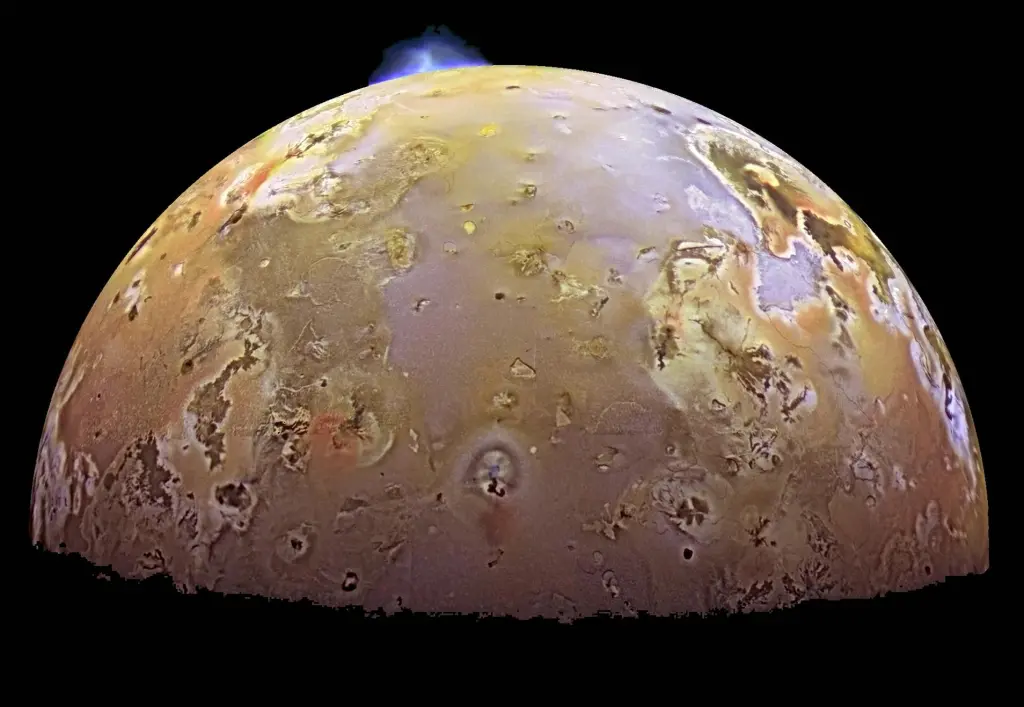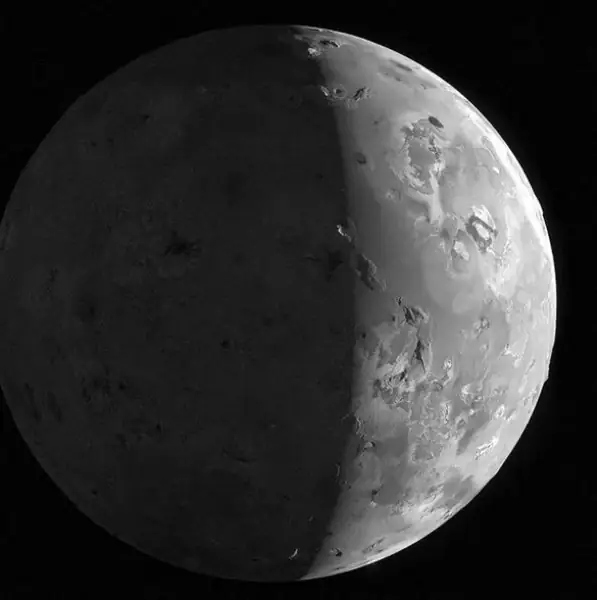
Scientists from the National Aeronautics and Space Administration (NASA) have obtained stunning new images of the surface of Jupiter’s moon Io, which has the largest number of volcanoes on its surface among all the planets of the solar system. This was the second very close flyby of Io, but this time the Juno probe recorded the eruption of one or two volcanoes, informs Forbes.
The Juno probe began studying Jupiter in 2016. This NASA probe was the first to peer into the dense clouds of Jupiter to study the magnetic field, composition and structure of the gas giant. In 2021, the Juno probe embarked on an extended mission to study Jupiter’s largest moons: Io, Ganymede, and Europa.
On February 3, this year, NASA’s probe made its second close flyby of Io and took several photos of the satellite’s surface. The data collected will help scientists better understand the surface of Io and the internal structure of Jupiter’s volcanic moon.

Io, a moon of Jupiter, is slightly larger than the Moon. Its surface is rocky, and the atmosphere consists of sulfur dioxide. Due to the influence of Jupiter on Io, the most powerful volcanic eruptions in the Solar System occur. Io is the closest satellite to the planet of the gas giant’s four main satellites, which include Ganymede, Europa, and Callisto. It takes only 42 days to circle the planet Io. Scientists believe that Jupiter’s gravity moves a huge amount of heat inside Io, creating strong volcanic activity and an ocean of magma under the satellite’s surface.

“Juno is the first spacecraft to fly around a planet in the outer solar system from pole to pole. The NASA probe will approach Jupiter again on March 7. Due to Jupiter’s powerful radiation belt, Juno was equipped with special protection to ensure that its valuable scientific instruments would not be damaged. With their help, Juno studies magnetic fields, gravitational fields, temperature, pressure and composition of Jupiter’s atmosphere.
Currently, NASA researchers have extended Juno’s mission until September 2025, but it is likely that the probe will continue to study Jupiter and its moons after that. The spacecraft is equipped with the largest solar panels of any spacecraft, so as long as it receives energy, it is likely to continue working.
As a reminder, scientists have found that in 5 billion years, the Sun will exhaust its fuel and turn into a red giant and then a white dwarf. In this process, it will absorb the planets closest to it, and the remaining ones, like Jupiter and Saturn, will continue to orbit around its remnants.

